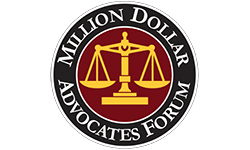OSHA requires employers to provide protective equipment (PPE)
If you are in the construction industry, you know how dangerous the work can be. By law, your employer must provide you with personal protective equipment (PPE) to minimize your exposure to hazards at the job site.
Because a work injury has potentially devastating consequences, the Occupational Safety and Health Administration (OSHA) has mandated safety equipment rules for all to follow. Just as employers are obligated to provide PPE at no cost, employees have an obligation to use safety gear when it is provided – to protect their health and their legal rights.
Employers must pay for safety equipment
In accordance with an OSHA rule instituted in 2008, employers are responsible for paying for the personal protective equipment their workers need. They cannot require employees to supply their own PPE. Employers must pay for PPE necessary for the job, such as:
- Hard hats and face shields
- Goggles and non-prescription eye protection
- Dust masks and respirators
- Steel-toed boots
- Hearing protection
- Welding PPE (helmet, apron, etc.)
- Firefighting PPE (turnout gear, proximity suit)
- Fall protection (harness, lifeline)
Employers cannot refuse to provide necessary safety equipment they deem too expensive. Nor can they deduct the cost from your paycheck.
Exceptions to the rule
Your employer may not have to pay for equipment you are permitted to wear off the job site, such as non-specialty boots or safety eyewear. Employers must pay for uniforms if they are required; otherwise you must provide your own work clothing such as ordinary work boots, long pants, overalls and long-sleeved shirts. Workers also provide their own weather protection clothing, such as winter gloves, parka, sunglasses, raincoat or rubber boots.
Employer responsibilities
Making sure that employees have what they need in terms of PPE is not difficult. Your employer should routinely inspect the workplace or jobsite to identify potential hazards, then provide workers with the appropriate personal protective equipment and replace it if it becomes worn or damaged. Your employer must also train you and your coworkers on the proper care and use of the PPE.
Employee responsibilities
Working at heights on scaffolding and ladders may require fall protection systems. An active work zone may require a hard hat, and so on. These rules are in place to protect workers.
If you fail to wear your PPE and you are injured, the employer may contest your workers’ comp claim. It could also bar or hamper a third-party personal injury lawsuit. For example, if a subcontractor dropped a tool on your head but you were not wearing PPE in a zone that required a hard hat, your own negligence could be a barrier to your claim. It just makes sense to take advantage of any PPE provided.
A lawyer can address liability for PPE
A personal injury attorney will tell you that your employer is liable if you sustain injuries due to the lack of the personal protective equipment he or she should have provided. A work injury is a serious matter that affects not only your health, but your continued employment and ability to properly care for your family.






